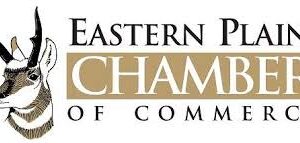There is an old saying, “Whether you are rich or poor, it is always good to have money.” There are two possible methods for a person to obtain needed goods or services. The first is to barter or trade, which was the original way our ancient ancestors did business. Imagine you were living 6,000 years ago in ancient Turkey. You had a herd of sheep. Your neighbor was growing grapes and wheat. There was no medium of exchange such as money because gold and silver were not considered money.Each party placed a value on their product. A peck of grapes and wheat might have been exchanged for one grown lamb. Each person would have obtained something they needed. While this method of obtaining the necessities in life worked, it was cumbersome and limited a person’s options.Then, some clever businessman decided to start a bank, a place where a particular thing could be stored until needed. He asked himself this question, “What do I need to become a banker? I cannot store all of the grapes, wheat, sheep, cattle and camels people want and need. I must find a way to make the exchange of these items easier.” So, the banker decided to store gold and silver for people as a common medium of exchange. This could have been diamonds or coal or anything on which a common value could be set. The banker called this medium of exchange ìmoney.î Most of the original banks in the Rocky Mountain area started out by storing the gold and silver of the miners who paid the banker to store their wealth.Gold and silver were used to make coins, with values depending on the amount of gold or silver in that coin. The size of coins and the printing on the coin would define the value of that coin. This process allowed the person with money to buy the items needed or wanted with great ease. The exchange of money for a product or service, instead of bartering, enabled everyone to quickly and easily buy and sell.While convenient, the use of money to complete purchases may be too easy. In fact, technology is making purchasing goods easier and easier. Consequently, consumers are increasingly failing to take control of their money. And our children are not learning to control their spending, either.Here are some tips to follow to take control of your money. These ideas should be taken to heart and shared with our children.
- Do not be an impulse buyer. Impulse buying can often result in “buyer’s remorse.”
- Make a separate shopping list for things you need and things you want. Stick to it.
- Research the products you plan to buy either online, through ads or go to the stores. Do price comparisons to obtain the best value for your money.
- Set a budget and limit on the amount of money to be spent. Once you reach that amount, you are done.
- Buy things you need and love so they will be used many times. Just buying because something is “on sale” is not a reason to buy.
- Do you need to buy the item today? If you wait to consider the purchase, you may decide that it is not a need.
- Designer-labeled products are more expensive because you are paying for the label in addition to the item. Is a label worth the price?
- Be careful about shopper’s envy. Because a friend or relative has a new gadget does not mean you should buy one. Be an original shopper.
- Be aware of marketing tricks. Why buy two of something to get three when you only need one?
- Put the money that you save into a savings account, a certificate of deposit or some kind of investment. Let the power of compounding interest be your friend.






